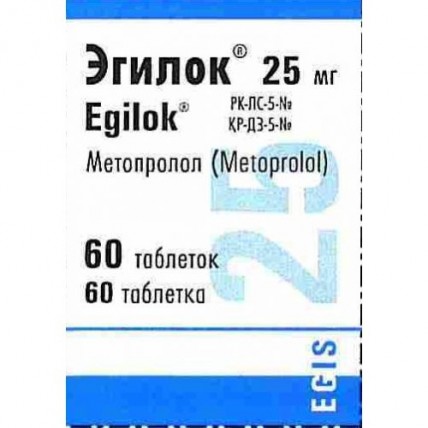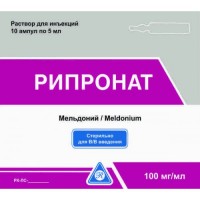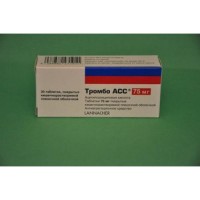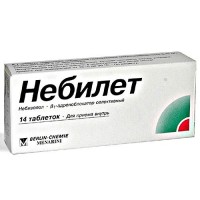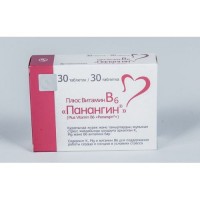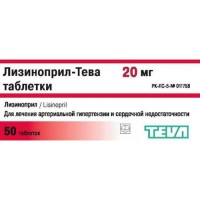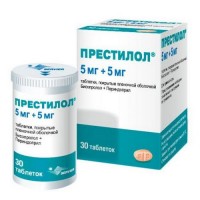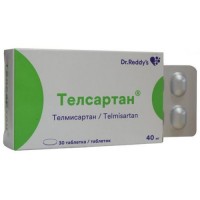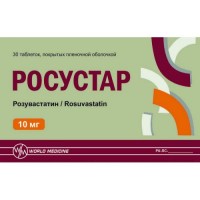Egilok® (Metoprolol) 25 mg, 60 tablets
- $13.20
Egilok® (Metoprolol) is used with or without other medications to treat high blood pressure (hypertension). Lowering high blood pressure helps prevent strokes, heart attacks, and kidney problems.
Egilok® (Metoprolol) is also used to treat chest pain (angina) and to improve survival after a heart attack. Metoprolol belongs to a class of drugs known as beta blockers. It works by blocking the action of certain natural chemicals in your body, such as epinephrine, on the heart and blood vessels. This effect lowers the heart rate, blood pressure, and strain on the heart.
Common brand names: Lopressor (Metoprolol tartrate), Toprol XL (Metoprolol succinate), Betaloc, First-Metoprolol, KAPSPARGO Sprinkle, Metoprolol Succinate ER, Metoprolol Tartrate, Beeetalor, Bloxan, Cardoxone, Metolar, Seloxen.
Other international brand names: Apo-Metoprolol, Beatrolol, Beloc, Beloc Duriles, Beloc Zok, Betaloc, Betaloc CR, Betaloc Zok, Betazok, Betoprolol, Cardeloc, Cardiosel, Cardiostat, Cardiotab, CP-Metolol, Denex, Jutabloc, Kenaprol, Lofarbil, Lopresor, Lopresor Oros, Lopresor Retard, Lopresor SR, Meto-Hennig, Metohexal, Metolol, Metopress Retard, Metoprim, Metoprogamma, Metostad, Metrol, Minax, Montebloc, Neobloc, Prolaken, Prolol SR, Ritmolol, Sefloc, Selokeen, Seloken, Seloken Retard, Seloken Zoc, Seloken-Zok, Selopral, Selo-zok, Selozok, Selozok LP, Slow-Lopresor, Vasocardin.
One tablet contains the active ingredient - metoprolol tartrate 25mg
- arterial hypertension (as monotherapy or in combination with other antihypertensive drugs;
- stable and unstable angina pectoris (as monotherapy or in combination with other antianginal drugs, as well as for the prevention of angina attacks)
- secondary prevention after myocardial infarction (supportive therapy)
- cardiac arrhythmias (sinus tachycardia, supraventricular tachycardia, ventricular extrasystoles)
- prevention of migraine attacks
- functional disorders of cardiac activity, accompanied by tachycardia (including hyperthyroidism)
The tablets can be taken with or without food. If necessary, the tablet can be divided into equal doses. The dose is selected individually to avoid excessive bradycardia.
With arterial hypertension: the recommended initial dose is 25-50 mg twice a day (morning and evening). With an insufficient clinical effect, the daily dose can be increased to 100 mg twice a day, or Egilok can be used in combination with other antihypertensive drugs. The maximum dose is 200 mg per day, divided into several doses.
For angina pectoris: the recommended initial dose is 25-50 mg 2-3 times a day. With insufficient clinical effect, this dose can be gradually increased to 200 mg per day or Egilok can be used in combination with other antianginal drugs.
Maintenance therapy after myocardial infarction: the recommended dose is 50-100 mg twice a day (morning and evening).
For arrhythmias: the recommended initial dose is 25-50 mg 2-3 times a day. With an insufficient clinical effect, this dose can be gradually increased to 200 mg or Egilok can be used in combination with other antiarrhythmic drugs.
For the prevention of migraine attacks: the recommended dose is 50 mg twice a day (morning and evening); if necessary, it can be increased to 100 mg twice a day.
With functional disorders of cardiac activity, accompanied by tachycardia (including hyperthyroidism): the recommended daily dose of 50 mg twice a day (morning and evening); if necessary, it can be increased to 100 mg twice a day.
Special patient groups:
When prescribing the drug to patients with impaired renal function or the elderly, there is no need to adjust the dosage regimen.
When prescribing the drug to patients with severe liver dysfunction (for example, in patients with cirrhosis who have undergone bypass surgery), a decrease in its dose may be required. In patients with liver cirrhosis, there is no need to adjust the dosage regimen due to the low binding of metoprolol to blood plasma proteins (5-10%).
Children and adolescents under the age of 18
There is limited experience with the drug in children and adolescents. There is no data on the effectiveness and safety of using Egilok tablets.
The side effects listed below have been reported in clinical trials and with the therapeutic use of metoprolol. In some cases, the relationship of the adverse event with the use of the drug has not been reliably established.
Very often (≥1 / 10)
- increased fatigue
Often (≥1 / 100 - <1/10)
- dizziness, headache
- bradycardia, cold extremities, increased heart rate, orthostatic hypotension, which is very rarely associated with fainting
- nausea, abdominal pain, diarrhea, constipation
- tension dyspnea
Uncommon (≥1 / 1000 - <1/100)
- increased symptoms of heart failure, atrioventricular block of the 1st degree, peripheral edema, pain in the region of the heart, cardiogenic shock in patients with acute myocardial infarction
- depression, impaired concentration, sleep disturbance, drowsiness, insomnia, nightmares
- paresthesia, muscle spasms
- skin itching, rash, urticaria, psoriasis-like skin lesions, dystrophic skin lesions, increased sweating
- bronchospasm (even in the absence of a diagnosed obstructive pulmonary disease)
- weight gain
- vomiting
Rarely (≥1 / 10,000 - <1/1000)
- dry mouth
- complaints of paresthesia, muscle spasms, nervous irritability, anxiety
- violation of potency, violation of sexual function
- arrhythmias, impaired myocardial conduction
- changes in liver function tests, hepatitis
- hair loss
- rhinitis
- conjunctivitis, dryness and irritation of the eyes (which can cause difficulties for people using contact lenses),
- blurred vision
Very rare (≥1 / 10,000)
- amnesia, impaired or impaired memory, confusion, hallucinations, tinnitus, hearing impairment
- increased pre-existing peripheral circulatory disorders, increased symptoms of intermittent claudication or Raynaud's disease, gangrene in patients with previous severe peripheral circulatory disorders
- photosensitivity
- exacerbation of psoriasis
- change in taste
- thrombocytopenia
- joint pain (arthralgia)
You should stop taking Egilok if any of the above effects reaches a clinically significant intensity, and its cause cannot be reliably established.
- hypersensitivity to metoprolol or other components of the drug, as well as to other β-blockers
- arterial hypotension
- atrioventricular block II or III degree
- decompensated heart failure
- clinically significant sinus bradycardia
- sick sinus syndrome
- cardiogenic shock
- severe disorders of peripheral circulation
- acute myocardial infarction if:
heart rate below 45 beats per minute,
P-Q interval exceeds 240 m / s,
systolic blood pressure below 100 mm Hg
-patients requiring constant or intermittent treatment with inotropic agents (β-agonists)
- simultaneous intravenous administration of verapamil or other similar calcium channel blockers
- severe peripheral vascular diseases with the threat of gangrene
- I trimester of pregnancy and lactation
- children under 18 years of age (due to the lack of sufficient clinical data).
The antihypertensive effects of Egilok and other antihypertensive drugs are usually summed up, therefore, in order to avoid the development of arterial hypotension, careful monitoring of the condition of patients receiving combinations of such drugs is necessary. However, the summation of the effects of antihypertensive drugs can be used, if necessary, to achieve more effective blood pressure control.
Intravenous administration of calcium channel blockers such as verapamil is not recommended for patients taking β-blockers. The simultaneous use of metoprolol with calcium channel blockers such as verapamil or diltiazem leads to an increase in negative inotropic and chronotropic effects.
The simultaneous use of metoprolol with monoamine oxidase inhibitors (MAOIs) is not recommended.
Caution should be exercised when combined with the following agents
With simultaneous use with oral antiarrhythmic drugs (such as quinidine and amiodarone), as well as parasympathomimetics, the risk of developing arterial hypotension, bradycardia, atrioventricular block is possible.
With simultaneous use with digitalis glycosides, the risk of developing bradycardia, conduction disturbances is possible; metoprolol does not affect the positive inotropic effect of digitalis drugs.
With simultaneous use with other antihypertensive drugs (guanethidine, reserpine, methyldopa, clonidine, guanfacine), severe bradycardia may develop.
When combined therapy with clonidine, the latter should be discontinued several days after discontinuation of metoprolol, in order to avoid a hypertensive crisis.
With simultaneous use with barbiturates, tranquilizers, tri- and tetracyclic antidepressants, antipsychotics and ethanol, the risk of developing arterial hypotension is possible.
Means for inhalation anesthesia (derivatives of hydrocarbons), when used simultaneously with Egilok, increase the risk of inhibition of myocardial contractile function and the development of arterial hypotension.
With simultaneous use with a- and b-sympathomimetics, the risk of developing arterial hypertension, severe bradycardia is possible, the risk of cardiac arrest is possible.
With simultaneous use with ergotamine, it is possible to increase the peripheral circulation.
With simultaneous use with b2-sympathomimetics, functional antagonism is possible.
With simultaneous use with non-steroidal anti-inflammatory drugs (indomethacin), it is possible to reduce the hypotensive effect of metoprolol.
With simultaneous use with estrogens, the antihypertensive effect of metoprolol decreases.
When taken simultaneously with oral hypoglycemic drugs, their effect may be reduced; with insulin - an increase in the risk of developing hypoglycemia, increasing its severity and lengthening, masking the symptoms of hypoglycemia.
With the simultaneous use of Egilok enhances the effect of curariform muscle relaxants.
With the simultaneous use of Egilok with inhibitors of microsomal liver enzymes (cimetidine, ethanol, hydralazine; serotonin reuptake inhibitors - paroxetine, fluoxetine and sertraline), the effects of metoprolol may increase due to an increase in its concentration in plasma.
With the simultaneous use of Egilok with inducers of microsomal liver enzymes CYP2D6 (rifampicin and barbiturates), it is possible to accelerate the metabolism of metoprolol, which leads to a decrease in the concentration of metoprolol in blood plasma and a decrease in the effect of Egilok.
During the period of Egilok therapy, patients who are simultaneously taking ganglion blockers, other β-blockers (including in the form of eye drops) or MAO inhibitors should be under close medical supervision.
Clinical experience with metoprolol in children is limited.
Anaphylactic shock is more severe in patients taking metoprolol.
Very rarely, against the background of Egilok therapy, in patients with conduction disturbances, deterioration may occur, sometimes with the development of atrioventricular block. If bradycardia develops during treatment, the dose of the drug should be reduced or the drug should be gradually withdrawn.
Against the background of the use of Egilok, the symptoms of impaired peripheral arterial circulation may worsen.
Cancellation of the drug is carried out gradually, reducing the dose for about 14 days. With an abrupt cessation of treatment, it is possible to increase the symptoms of angina pectoris and increase the risk of coronary disorders. When discontinuing the drug, special attention should be paid to patients with coronary artery disease.
Despite the fact that cardioselective β-blockers have a lesser effect on respiratory function, compared to non-selective β-blockers, Egilok is prescribed with caution to patients with chronic obstructive respiratory diseases. When metoprolol is prescribed to patients with bronchial asthma, the simultaneous use of β2-adrenergic agonists (in the form of tablets or aerosol) is necessary.
Selective β-blockers, in contrast to non-selective ones, relatively rarely affect carbohydrate metabolism or mask the symptoms of hyperglycemia. In patients with diabetes mellitus taking Egilok, blood glucose levels should be regularly monitored and, if necessary, the dose of insulin or oral hypoglycemic drugs should be adjusted.
In patients with pheochromocytoma, Egilok should be used in combination with a-blockers.
If it is necessary to carry out a surgical intervention, it is necessary to warn the anesthesiologist about the ongoing therapy with Egilok (the choice of a drug for general anesthesia with a minimal negative inotropic effect); drug withdrawal is not required.
Pregnancy and lactation
The use of the drug during pregnancy requires a careful assessment of the risks and benefits. If it is necessary to prescribe the drug during this period, it is necessary to carefully monitor the condition of the fetus and the newborn within 48-72 hours after childbirth, since intrauterine growth retardation, bradycardia, arterial hypotension, respiratory depression, hypoglycemia are possible. Metoprolol passes into breast milk only in small amounts, however, it is recommended to stop breastfeeding.
Features of the effect of the drug on the ability to drive a vehicle or potentially dangerous machinery.
Metoprolol adversely affects the patient's ability to drive and perform work with an increased risk of accidents, especially at the beginning of treatment and while taking alcohol (dizziness and fatigue may develop). In patients whose activities require increased attention and speed of psychomotor reactions, dose selection should be decided only after assessing the patient's individual response to the drug.
Symptoms: arterial hypotension, severe sinus bradycardia, heart failure, asystole, nausea, vomiting, bronchospasm, cyanosis, hypoglycemia; with acute overdose - loss of consciousness, cardiogenic shock, atrioventricular block, coma. The first symptoms of an overdose appear 20 minutes - 2 hours after taking the drug.
The above symptoms can be aggravated by the simultaneous administration of the drug with alcohol, other antihypertensive drugs, quinidine and barbiturates.
Treatment: Gastric lavage (if lavage is impossible and if the patient is conscious, vomiting can be induced), the appointment of adsorbents, symptomatic therapy. Intensive care and careful monitoring of the parameters of blood circulation and respiration, renal function, blood glucose levels, and serum electrolytes are required. Atropine sulfate (0.25-0.5mg IV for adults, 10-20mcg / kg for children) should be given before gastric lavage (due to the risk of vagus stimulation).
In severe arterial hypotension, bradycardia and threatening heart failure - intravenous administration of β-adrenostimulants with an interval of 2-5 minutes or by infusion until the desired effect is achieved or intravenous administration of atropine. In the absence of a positive effect, dopamine, dobutamine or norepinephrine are used.
Administration of glucagon in doses of 1-10 mg may also be helpful in reversing the effects of strong β-receptor blockade. With severe bradycardia that is resistant to pharmacotherapy, implantation of a pacemaker may be required. For bronchospasm, intravenous administration of a β2-agonist (eg, terbutaline). These antidotes can be used in higher than therapeutic doses. Metoprolol cannot be effectively removed by hemodialysis.
60 tablets (for a dosage of 25 mg, 50 mg) and 30 or 60 tablets (for a dosage of 100 mg) in brown glass vials with polyethylene lids, with a first opening control and equipped with an accordion shock absorber. One bottle each together with instructions for medical use in the state and Russian languages in a carton box
Store at a temperature not exceeding 25 ° C
Keep out of the reach of children!
Shelf life - 5 years
Do not use after the expiration date.
Egilok® (Metoprolol) is also used to treat chest pain (angina) and to improve survival after a heart attack. Metoprolol belongs to a class of drugs known as beta blockers. It works by blocking the action of certain natural chemicals in your body, such as epinephrine, on the heart and blood vessels. This effect lowers the heart rate, blood pressure, and strain on the heart.
Common brand names: Lopressor (Metoprolol tartrate), Toprol XL (Metoprolol succinate), Betaloc, First-Metoprolol, KAPSPARGO Sprinkle, Metoprolol Succinate ER, Metoprolol Tartrate, Beeetalor, Bloxan, Cardoxone, Metolar, Seloxen.
Other international brand names: Apo-Metoprolol, Beatrolol, Beloc, Beloc Duriles, Beloc Zok, Betaloc, Betaloc CR, Betaloc Zok, Betazok, Betoprolol, Cardeloc, Cardiosel, Cardiostat, Cardiotab, CP-Metolol, Denex, Jutabloc, Kenaprol, Lofarbil, Lopresor, Lopresor Oros, Lopresor Retard, Lopresor SR, Meto-Hennig, Metohexal, Metolol, Metopress Retard, Metoprim, Metoprogamma, Metostad, Metrol, Minax, Montebloc, Neobloc, Prolaken, Prolol SR, Ritmolol, Sefloc, Selokeen, Seloken, Seloken Retard, Seloken Zoc, Seloken-Zok, Selopral, Selo-zok, Selozok, Selozok LP, Slow-Lopresor, Vasocardin.
Composition
One tablet contains the active ingredient - metoprolol tartrate 25mg
Indications for use
- arterial hypertension (as monotherapy or in combination with other antihypertensive drugs;
- stable and unstable angina pectoris (as monotherapy or in combination with other antianginal drugs, as well as for the prevention of angina attacks)
- secondary prevention after myocardial infarction (supportive therapy)
- cardiac arrhythmias (sinus tachycardia, supraventricular tachycardia, ventricular extrasystoles)
- prevention of migraine attacks
- functional disorders of cardiac activity, accompanied by tachycardia (including hyperthyroidism)
Method of administration and dosage
The tablets can be taken with or without food. If necessary, the tablet can be divided into equal doses. The dose is selected individually to avoid excessive bradycardia.
With arterial hypertension: the recommended initial dose is 25-50 mg twice a day (morning and evening). With an insufficient clinical effect, the daily dose can be increased to 100 mg twice a day, or Egilok can be used in combination with other antihypertensive drugs. The maximum dose is 200 mg per day, divided into several doses.
For angina pectoris: the recommended initial dose is 25-50 mg 2-3 times a day. With insufficient clinical effect, this dose can be gradually increased to 200 mg per day or Egilok can be used in combination with other antianginal drugs.
Maintenance therapy after myocardial infarction: the recommended dose is 50-100 mg twice a day (morning and evening).
For arrhythmias: the recommended initial dose is 25-50 mg 2-3 times a day. With an insufficient clinical effect, this dose can be gradually increased to 200 mg or Egilok can be used in combination with other antiarrhythmic drugs.
For the prevention of migraine attacks: the recommended dose is 50 mg twice a day (morning and evening); if necessary, it can be increased to 100 mg twice a day.
With functional disorders of cardiac activity, accompanied by tachycardia (including hyperthyroidism): the recommended daily dose of 50 mg twice a day (morning and evening); if necessary, it can be increased to 100 mg twice a day.
Special patient groups:
When prescribing the drug to patients with impaired renal function or the elderly, there is no need to adjust the dosage regimen.
When prescribing the drug to patients with severe liver dysfunction (for example, in patients with cirrhosis who have undergone bypass surgery), a decrease in its dose may be required. In patients with liver cirrhosis, there is no need to adjust the dosage regimen due to the low binding of metoprolol to blood plasma proteins (5-10%).
Children and adolescents under the age of 18
There is limited experience with the drug in children and adolescents. There is no data on the effectiveness and safety of using Egilok tablets.
Side effects
The side effects listed below have been reported in clinical trials and with the therapeutic use of metoprolol. In some cases, the relationship of the adverse event with the use of the drug has not been reliably established.
Very often (≥1 / 10)
- increased fatigue
Often (≥1 / 100 - <1/10)
- dizziness, headache
- bradycardia, cold extremities, increased heart rate, orthostatic hypotension, which is very rarely associated with fainting
- nausea, abdominal pain, diarrhea, constipation
- tension dyspnea
Uncommon (≥1 / 1000 - <1/100)
- increased symptoms of heart failure, atrioventricular block of the 1st degree, peripheral edema, pain in the region of the heart, cardiogenic shock in patients with acute myocardial infarction
- depression, impaired concentration, sleep disturbance, drowsiness, insomnia, nightmares
- paresthesia, muscle spasms
- skin itching, rash, urticaria, psoriasis-like skin lesions, dystrophic skin lesions, increased sweating
- bronchospasm (even in the absence of a diagnosed obstructive pulmonary disease)
- weight gain
- vomiting
Rarely (≥1 / 10,000 - <1/1000)
- dry mouth
- complaints of paresthesia, muscle spasms, nervous irritability, anxiety
- violation of potency, violation of sexual function
- arrhythmias, impaired myocardial conduction
- changes in liver function tests, hepatitis
- hair loss
- rhinitis
- conjunctivitis, dryness and irritation of the eyes (which can cause difficulties for people using contact lenses),
- blurred vision
Very rare (≥1 / 10,000)
- amnesia, impaired or impaired memory, confusion, hallucinations, tinnitus, hearing impairment
- increased pre-existing peripheral circulatory disorders, increased symptoms of intermittent claudication or Raynaud's disease, gangrene in patients with previous severe peripheral circulatory disorders
- photosensitivity
- exacerbation of psoriasis
- change in taste
- thrombocytopenia
- joint pain (arthralgia)
You should stop taking Egilok if any of the above effects reaches a clinically significant intensity, and its cause cannot be reliably established.
Contraindications
- hypersensitivity to metoprolol or other components of the drug, as well as to other β-blockers
- arterial hypotension
- atrioventricular block II or III degree
- decompensated heart failure
- clinically significant sinus bradycardia
- sick sinus syndrome
- cardiogenic shock
- severe disorders of peripheral circulation
- acute myocardial infarction if:
heart rate below 45 beats per minute,
P-Q interval exceeds 240 m / s,
systolic blood pressure below 100 mm Hg
-patients requiring constant or intermittent treatment with inotropic agents (β-agonists)
- simultaneous intravenous administration of verapamil or other similar calcium channel blockers
- severe peripheral vascular diseases with the threat of gangrene
- I trimester of pregnancy and lactation
- children under 18 years of age (due to the lack of sufficient clinical data).
Drug interactions
The antihypertensive effects of Egilok and other antihypertensive drugs are usually summed up, therefore, in order to avoid the development of arterial hypotension, careful monitoring of the condition of patients receiving combinations of such drugs is necessary. However, the summation of the effects of antihypertensive drugs can be used, if necessary, to achieve more effective blood pressure control.
Intravenous administration of calcium channel blockers such as verapamil is not recommended for patients taking β-blockers. The simultaneous use of metoprolol with calcium channel blockers such as verapamil or diltiazem leads to an increase in negative inotropic and chronotropic effects.
The simultaneous use of metoprolol with monoamine oxidase inhibitors (MAOIs) is not recommended.
Caution should be exercised when combined with the following agents
With simultaneous use with oral antiarrhythmic drugs (such as quinidine and amiodarone), as well as parasympathomimetics, the risk of developing arterial hypotension, bradycardia, atrioventricular block is possible.
With simultaneous use with digitalis glycosides, the risk of developing bradycardia, conduction disturbances is possible; metoprolol does not affect the positive inotropic effect of digitalis drugs.
With simultaneous use with other antihypertensive drugs (guanethidine, reserpine, methyldopa, clonidine, guanfacine), severe bradycardia may develop.
When combined therapy with clonidine, the latter should be discontinued several days after discontinuation of metoprolol, in order to avoid a hypertensive crisis.
With simultaneous use with barbiturates, tranquilizers, tri- and tetracyclic antidepressants, antipsychotics and ethanol, the risk of developing arterial hypotension is possible.
Means for inhalation anesthesia (derivatives of hydrocarbons), when used simultaneously with Egilok, increase the risk of inhibition of myocardial contractile function and the development of arterial hypotension.
With simultaneous use with a- and b-sympathomimetics, the risk of developing arterial hypertension, severe bradycardia is possible, the risk of cardiac arrest is possible.
With simultaneous use with ergotamine, it is possible to increase the peripheral circulation.
With simultaneous use with b2-sympathomimetics, functional antagonism is possible.
With simultaneous use with non-steroidal anti-inflammatory drugs (indomethacin), it is possible to reduce the hypotensive effect of metoprolol.
With simultaneous use with estrogens, the antihypertensive effect of metoprolol decreases.
When taken simultaneously with oral hypoglycemic drugs, their effect may be reduced; with insulin - an increase in the risk of developing hypoglycemia, increasing its severity and lengthening, masking the symptoms of hypoglycemia.
With the simultaneous use of Egilok enhances the effect of curariform muscle relaxants.
With the simultaneous use of Egilok with inhibitors of microsomal liver enzymes (cimetidine, ethanol, hydralazine; serotonin reuptake inhibitors - paroxetine, fluoxetine and sertraline), the effects of metoprolol may increase due to an increase in its concentration in plasma.
With the simultaneous use of Egilok with inducers of microsomal liver enzymes CYP2D6 (rifampicin and barbiturates), it is possible to accelerate the metabolism of metoprolol, which leads to a decrease in the concentration of metoprolol in blood plasma and a decrease in the effect of Egilok.
During the period of Egilok therapy, patients who are simultaneously taking ganglion blockers, other β-blockers (including in the form of eye drops) or MAO inhibitors should be under close medical supervision.
Special warnings and precautions for use
Clinical experience with metoprolol in children is limited.
Anaphylactic shock is more severe in patients taking metoprolol.
Very rarely, against the background of Egilok therapy, in patients with conduction disturbances, deterioration may occur, sometimes with the development of atrioventricular block. If bradycardia develops during treatment, the dose of the drug should be reduced or the drug should be gradually withdrawn.
Against the background of the use of Egilok, the symptoms of impaired peripheral arterial circulation may worsen.
Cancellation of the drug is carried out gradually, reducing the dose for about 14 days. With an abrupt cessation of treatment, it is possible to increase the symptoms of angina pectoris and increase the risk of coronary disorders. When discontinuing the drug, special attention should be paid to patients with coronary artery disease.
Despite the fact that cardioselective β-blockers have a lesser effect on respiratory function, compared to non-selective β-blockers, Egilok is prescribed with caution to patients with chronic obstructive respiratory diseases. When metoprolol is prescribed to patients with bronchial asthma, the simultaneous use of β2-adrenergic agonists (in the form of tablets or aerosol) is necessary.
Selective β-blockers, in contrast to non-selective ones, relatively rarely affect carbohydrate metabolism or mask the symptoms of hyperglycemia. In patients with diabetes mellitus taking Egilok, blood glucose levels should be regularly monitored and, if necessary, the dose of insulin or oral hypoglycemic drugs should be adjusted.
In patients with pheochromocytoma, Egilok should be used in combination with a-blockers.
If it is necessary to carry out a surgical intervention, it is necessary to warn the anesthesiologist about the ongoing therapy with Egilok (the choice of a drug for general anesthesia with a minimal negative inotropic effect); drug withdrawal is not required.
Pregnancy and lactation
The use of the drug during pregnancy requires a careful assessment of the risks and benefits. If it is necessary to prescribe the drug during this period, it is necessary to carefully monitor the condition of the fetus and the newborn within 48-72 hours after childbirth, since intrauterine growth retardation, bradycardia, arterial hypotension, respiratory depression, hypoglycemia are possible. Metoprolol passes into breast milk only in small amounts, however, it is recommended to stop breastfeeding.
Features of the effect of the drug on the ability to drive a vehicle or potentially dangerous machinery.
Metoprolol adversely affects the patient's ability to drive and perform work with an increased risk of accidents, especially at the beginning of treatment and while taking alcohol (dizziness and fatigue may develop). In patients whose activities require increased attention and speed of psychomotor reactions, dose selection should be decided only after assessing the patient's individual response to the drug.
Overdose
Symptoms: arterial hypotension, severe sinus bradycardia, heart failure, asystole, nausea, vomiting, bronchospasm, cyanosis, hypoglycemia; with acute overdose - loss of consciousness, cardiogenic shock, atrioventricular block, coma. The first symptoms of an overdose appear 20 minutes - 2 hours after taking the drug.
The above symptoms can be aggravated by the simultaneous administration of the drug with alcohol, other antihypertensive drugs, quinidine and barbiturates.
Treatment: Gastric lavage (if lavage is impossible and if the patient is conscious, vomiting can be induced), the appointment of adsorbents, symptomatic therapy. Intensive care and careful monitoring of the parameters of blood circulation and respiration, renal function, blood glucose levels, and serum electrolytes are required. Atropine sulfate (0.25-0.5mg IV for adults, 10-20mcg / kg for children) should be given before gastric lavage (due to the risk of vagus stimulation).
In severe arterial hypotension, bradycardia and threatening heart failure - intravenous administration of β-adrenostimulants with an interval of 2-5 minutes or by infusion until the desired effect is achieved or intravenous administration of atropine. In the absence of a positive effect, dopamine, dobutamine or norepinephrine are used.
Administration of glucagon in doses of 1-10 mg may also be helpful in reversing the effects of strong β-receptor blockade. With severe bradycardia that is resistant to pharmacotherapy, implantation of a pacemaker may be required. For bronchospasm, intravenous administration of a β2-agonist (eg, terbutaline). These antidotes can be used in higher than therapeutic doses. Metoprolol cannot be effectively removed by hemodialysis.
Release form and packaging
60 tablets (for a dosage of 25 mg, 50 mg) and 30 or 60 tablets (for a dosage of 100 mg) in brown glass vials with polyethylene lids, with a first opening control and equipped with an accordion shock absorber. One bottle each together with instructions for medical use in the state and Russian languages in a carton box
Storage conditions
Store at a temperature not exceeding 25 ° C
Keep out of the reach of children!
Shelf life - 5 years
Do not use after the expiration date.
